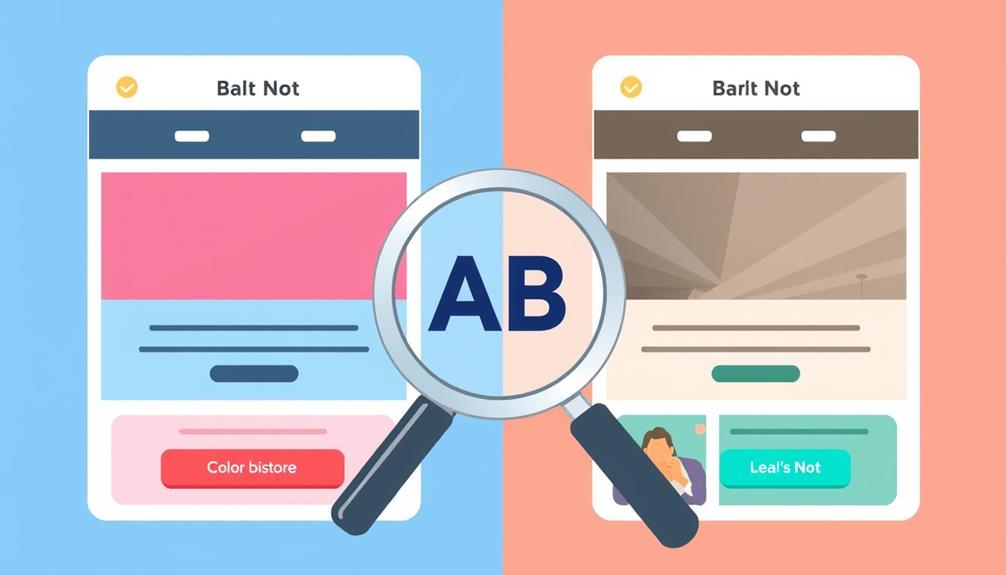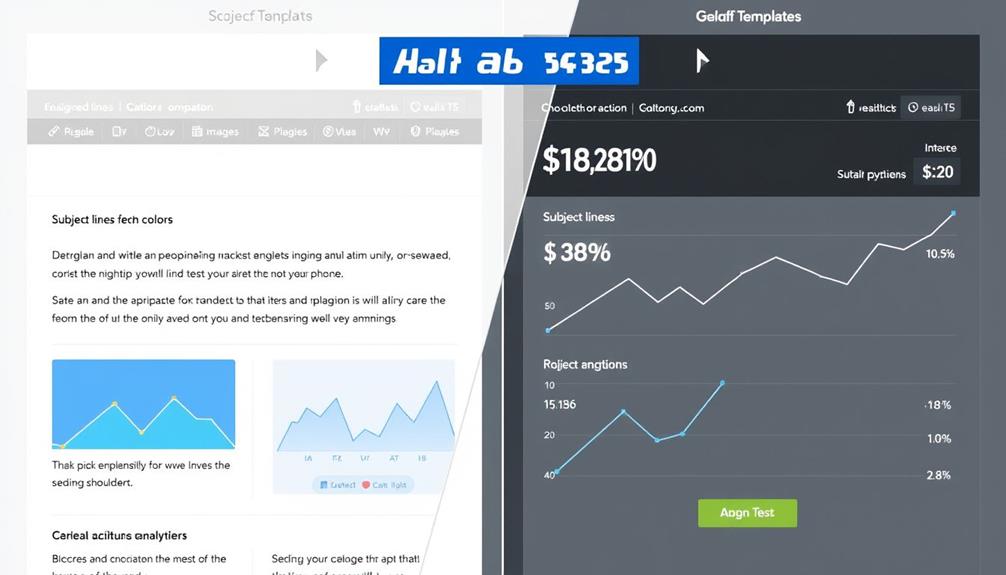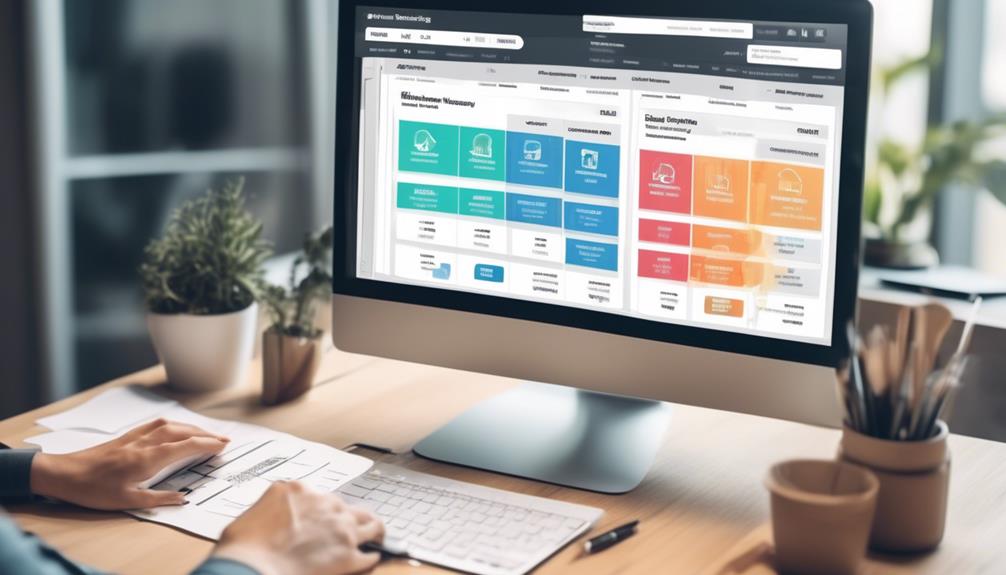Mastering transactional email templates can elevate your customer interactions. These automated messages aren't just confirmations; they're opportunities to engage. By focusing on personalized content, clarity, and a mobile-first design, you can foster trust and guarantee your emails are opened. Effective design elements, like organized layouts and compelling calls to action, enhance user experience. A/B testing allows you to refine your templates, driving higher open rates. Plus, using real-world examples can inspire your approach. As you explore the art of transactional emails, you'll uncover strategies that can take your communications to the next level.
Key Takeaways
- Transactional emails should feature personalized content, addressing recipients by name to enhance engagement and trust.
- A clear and organized design with mobile responsiveness ensures readability across devices, improving user experience.
- Consistent branding elements, including logos and color schemes, reinforce brand identity and increase customer retention.
- A/B testing different email variables allows for optimization, boosting open rates and customer engagement.
- Utilizing timely delivery and relevant content based on user actions enhances the effectiveness of transactional emails.
Understanding Transactional Emails

When you make a purchase or reset your password, you'll likely receive a transactional email, which is an integral part of online communication. These automated messages are triggered by your actions and serve vital functions like confirming orders or providing password reset links.
With a remarkable open rate of 53%, transactional emails are far more relevant to you than typical promotional emails. Effective Email Marketing Strategies highlight the importance of leveraging such automated communications to enhance customer experience and retention.
One of the standout features of transactional emails is their focus on customer engagement. They often address you by name and deliver a personalized experience, guaranteeing the content aligns with your specific actions or preferences.
Timely delivery is also essential; receiving these emails immediately after your action fosters trust and enhances your overall experience.
Moreover, legal compliance is mandatory for these emails. Regulations like CAN-SPAM and GDPR dictate that transactional emails must focus on informative content rather than promotional material.
This commitment to legal standards guarantees you receive only what you need without unnecessary marketing fluff. Understanding these elements helps you appreciate the role transactional emails play in effective communication and their importance in maintaining a positive relationship with brands.
Key Elements of Effective Emails

Transactional emails are most effective when they incorporate specific key elements that enhance the recipient's experience. By focusing on these components, you can boost engagement rates and build stronger customer relationships.
For instance, understanding the importance of a budget plan can help businesses allocate resources effectively for email marketing.
- Personalized Content: Address recipients by name and tailor your messages to their preferences. This personal touch fosters connection and encourages interaction.
- Clarity and Timeliness: Make certain your emails deliver concise information without unnecessary jargon. Sending these emails promptly after user actions meets expectations and reduces confusion.
- Organized Design and Mobile Responsiveness: Use a clean layout that highlights key information and calls to action. As over 50% of emails are opened on mobile devices, make certain your design is readable across different screen sizes.
Best Practices for Design

When designing your transactional emails, you need to prioritize clarity in messaging to guarantee your recipients quickly grasp essential information.
Incorporating high-quality content can further enhance user experience and engagement.
Consistent branding elements help build trust, while responsive design principles guarantee your emails look great on any device.
Clarity in Messaging
Effective clarity in messaging is crucial for guaranteeing your recipients quickly grasp the necessary information without wading through jargon. When crafting your transactional emails, prioritize the following best practices for clarity in transactional emails:
1. Concise Communication: Aim for brevity. Recipients prefer straightforward messages that deliver key details swiftly.
Additionally, understanding your audience's preferences can help tailor your messaging effectively, much like how coffee culture varies among different communities.
2. Mobile-Responsive Design: With 50% of users accessing emails on mobile devices, make sure your layout adapts seamlessly to various screen sizes. This enhances readability and maintains clarity.
3. Effective Design Elements: Incorporate prominent headings and bullet points to break down information into digestible chunks. This greatly improves user comprehension and engagement.
Regularly updating your email templates based on user feedback and analytics is crucial. Doing so can lead to a 20% increase in open rates by maintaining clarity and relevance in your messaging.
Consistent Branding Elements
Creating transactional emails with consistent branding elements not only reinforces your identity but also strengthens customer relationships. By incorporating your logo, color schemes, and typography, you enhance brand recognition, which can lead to a 23% increase in customer retention rates.
When recipients receive emails that reflect a cohesive design, they can easily identify you as the sender, vital since 53% of recipients open transactional emails based on familiarity. Additionally, using essential oils for relief can create a calming atmosphere that encourages recipients to engage with your emails more positively.
Utilizing a uniform layout across all email templates keeps your communications professional and engaging. In fact, consistent use of imagery and design can boost user engagement by up to 30%. Customers appreciate the familiarity, which helps in building trust.
Don't forget to infuse your brand voice and tone into the messaging. This approach makes your transactional emails feel more personal and relevant, enhancing the overall customer experience.
Additionally, maintaining uniformity in branding elements prevents confusion and improves the effectiveness of your emails. Remember, 64% of consumers cite shared values as the primary reason for their loyalty to a brand, so make sure your branding is consistent across all touchpoints.
Responsive Design Principles
Responsive design principles are fundamental for guaranteeing your transactional emails reach your audience effectively across all devices. With around 46% of email opens happening on mobile devices, optimizing your emails is imperative.
Incorporating mood boards essential for visualizing design concepts can also help in crafting engaging email layouts. Here are three best practices to implement:
- Fluid Grids: Use fluid grids to create layouts that adjust seamlessly to different screen sizes. This guarantees your content looks good on any device.
- Flexible Images: Incorporate flexible images that scale with the grid, maintaining quality and appearance regardless of the device used.
- Single-column Layout: Opt for a single-column layout for your transactional emails. This simplifies navigation and enhances readability, particularly on smaller screens.
To further enhance readability, verify your font sizes are at least 14px for body text and 22px for headlines.
Testing your emails across various email clients and devices is also essential; approximately 80% of users will delete an email that doesn't display correctly.
Tools and Resources for Creation

When it comes to crafting transactional emails, utilizing the right tools and resources can make all the difference. Start with MailMason, an open-source toolset designed specifically for building consistent and effective transactional email templates. It guarantees your designs adhere to best practices in email design.
Additionally, incorporating elements that evoke feelings of joy and nostalgia can enhance your email's emotional impact. You'll also want to take into account Litmus, which helps you optimize your templates for compatibility across various email clients, assuring your emails look great everywhere.
To further guide your design process, refer to extensive email design guides. These resources provide specific instructions for creating essential transactional email types like receipts and welcome emails, helping maintain consistent messaging and branding.
Testing tools are equally important; they verify your emails' compatibility across different platforms, reducing the risk of rendering issues that can frustrate users.
Lastly, don't overlook collaboration tools and design software. These features streamline the email creation process, enabling efficient feedback and iterations on your transactional email templates.
A/B Testing and Optimization

A/B testing is a powerful tool for optimizing your transactional emails. By comparing two versions of an email, you can determine which one performs better regarding open rates and engagement. Significantly, companies like Noble Gold emphasize the importance of customer satisfaction in their services, which can also apply to email campaigns.
Here's how to get started:
- Test One Variable: Focus on one element at a time, such as subject lines, call-to-action buttons, or email layouts. This clarity helps you pinpoint what influences customer behaviors.
- Utilize Email Performance Metrics: Track delivery rates and user interactions to refine your A/B testing process. These metrics are essential for optimizing future campaigns based on your audience's preferences.
- Analyze Results Regularly: Continuous analysis of A/B testing results allows you to adapt to changing customer behaviors, ensuring your transactional emails stay effective and relevant.
Regular A/B testing can lead to significant improvements; studies indicate that optimized transactional emails can boost open rates by up to 49%.
Choosing an Email Service Provider

Selecting the right Email Service Provider (ESP) is fundamental for ensuring your transactional emails reach their intended recipients effectively. Your choice should prioritize providers with a strong email deliverability track record, as this can directly influence how well your emails perform.
In addition to this, consider exploring best ways to earn money online through affiliate marketing, which can supplement your income while enhancing your email campaigns. Look for scalability options that allow your ESP to grow alongside your business, accommodating increased email volumes without sacrificing performance.
Security measures are also important; consider ESPs that provide dedicated IP addresses and automated warm-ups. These features help maintain your sender reputation and enhance deliverability.
Additionally, evaluate the vendor's customer engagement insights and performance monitoring tools, as they're essential for optimizing your email strategy based on real-time data.
Don't overlook support options either. Reliable assistance through email, chat, or phone can make a big difference when you're facing issues. A thorough knowledge base for self-service resources is a nice bonus, too.
Ultimately, the right ESP won't only help you send effective transactional emails but will also contribute to building a strong relationship with your customers through enhanced engagement and security.
Real-World Examples

Real-world examples of effective transactional emails demonstrate how businesses can enhance customer engagement and trust.
By focusing on the customer experience, these companies show the importance of personalized communication and relevant information. Additionally, incorporating elements such as common types of cold medications can create more extensive communication strategies that resonate with customers.
Here are three standout examples:
- Slack: Their personalized welcome emails greet new users and provide helpful onboarding tips. This approach fosters immediate engagement and supports users from the start.
- Etsy: In their purchase confirmation emails, Etsy includes tailored up-selling opportunities. This not only creates a seamless shopping experience but also strengthens customer relationships through personalized recommendations.
- Airbnb: They send detailed booking confirmation emails that inform users about their reservations and offer valuable travel tips. This enriches the customer experience while ensuring all significant information is communicated clearly.
These examples highlight how transactional emails, such as confirmation emails, can be more than just notifications.
They play an essential role in building customer trust and enhancing engagement by providing relevant, personalized content that resonates with users.
Enhancing User Engagement

To boost user engagement, focus on personalized communication strategies that make recipients feel valued.
Timely delivery of your transactional emails is essential, as users expect to receive them promptly after their actions.
Personalized Communication Strategies
Personalized communication strategies are key to enhancing user engagement in transactional emails. By incorporating personalization techniques, you can make your emails more relevant and appealing to your audience. Here are three effective strategies you can implement:
- Use the recipient's name: Addressing customers by their name in the subject line can boost open rates by up to 26%. This simple change fosters a connection right from the start.
- Leverage purchase history for relevant product suggestions: Tailoring recommendations based on previous purchases can result in a 20% increase in click-through rates. When users see items that resonate with their interests, it enhances their customer experience.
- Implement behavioral insights: Analyzing browsing history allows you to craft personalized content that speaks directly to the user's preferences. This not only boosts engagement but also encourages loyalty to your brand.
Don't forget the power of A/B testing. By experimenting with different personalization strategies, you can discover which tactics drive the most engagement and refine your approach over time.
Embracing these strategies will surely enhance your transactional emails and strengthen your relationship with your audience.
Timely Information Delivery
Timely information delivery is essential for maintaining user engagement in transactional emails. When you send order confirmations or shipping notifications promptly, you tap into a vital expectation customers have: immediate communication. This timely delivery not only meets their need for important updates but also builds trust and loyalty with your brand.
With open rates around 53%, these transactional emails are a golden opportunity for customer engagement. Including a clear call to action—like tracking links or customer support contacts—encourages further interaction. It keeps your audience engaged and informed, making them more likely to return for future transactions.
Moreover, the promptness of your emails can greatly reduce customer support inquiries, as users will find the information they seek right in their inbox. By leveraging automation, you guarantee that these emails are sent in real-time, enhancing the overall user experience.
This proactive approach fosters a relationship where customers feel valued and connected to your brand. Remember, the more timely and relevant your communications are, the more likely you're to keep users engaged and satisfied.
Future Trends in Transactional Emails

A significant shift is happening in the world of transactional emails, with brands increasingly leveraging AI-driven personalization techniques. You can expect emails tailored to your preferences, enhancing customer engagement and satisfaction.
Here are three key trends to watch:
- Interactive Elements: Brands are incorporating buttons, carousels, and other interactive features, allowing you to take immediate action within the email. This boosts conversion rates and enriches your user experience.
- Mobile-First Design: With over 50% of transactional emails opened on mobile devices, responsive layouts are crucial. Brands are focusing on concise content and ideal viewing to cater to your on-the-go lifestyle.
- Privacy Regulations: As these regulations tighten, businesses will prioritize transparency and consent in their email strategies. They'll guarantee that you're informed about how your data is used, fostering trust through clear communication.
Additionally, advanced analytics tools will help brands monitor engagement metrics, refining their strategies for better effectiveness.
As these trends evolve, you can anticipate a more engaging, personalized experience through your transactional emails.
Frequently Asked Questions
What Are Transactional Email Templates?
Transactional email templates are pre-designed formats you use to send important information triggered by user actions. They deliver relevant content like order confirmations or password resets, ensuring compliance while enhancing engagement through personalization and clarity.
How Do You Write a Transactional Email?
To write a transactional email, start with a clear subject line, personalize it with the recipient's name, use a simple layout for easy reading, and include a strong call to action to guide their next steps.
What Qualifies as a Transactional Email?
A transactional email qualifies as a message directly responding to your actions, like order confirmations or password resets. It's relevant, timely, and focuses on providing essential information without any marketing intent.
How Do You Master the Art of Email Writing?
You'll master email writing by focusing on clarity and brevity. Personalize your messages, include a strong call to action, and test different strategies to engage your audience effectively. Remember, less is often more!
Conclusion
In the garden of digital communication, transactional emails are the sturdy trees that bear the sweetest fruits of engagement. By nurturing your templates with thoughtful design and strategic content, you'll cultivate strong connections with your audience. As you explore new tools and trends, remember that every email is a seed planted in the minds of your users. With care and creativity, you can harvest a thriving relationship that keeps blossoming long after the initial interaction.










